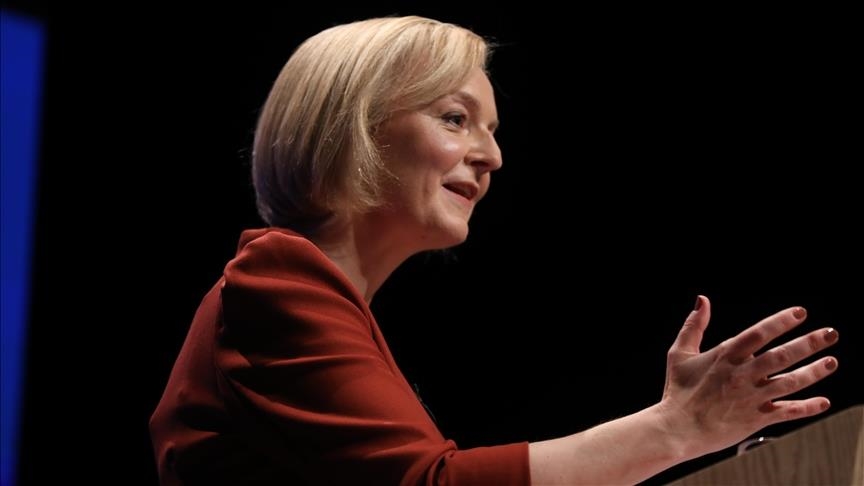LONDON
The ignominious exit of Liz Truss, only the third woman to hold the UK’s highest office, has etched her name in history.
Her tumultuous 44-day tenure ranks as the shortest-lived leadership in British history, a truly undesirable record for a person who, up until a day ago, was touting her tenacity as “a fighter, not a quitter!”
With a somberness befitting the occasion, Truss stood in front of the famous black door of 10 Downing Street on Thursday to admit she could not deliver the mandate on which she was elected by the Conservative Party as Boris Johnson’s successor.
This was, of course, not the first U-turn from Truss during a turbulent reign that has battered the British ruling party’s public standing, with recent polling numbers coming in as low as 20%.
Up the ladder
Born in Oxford to left-wing parents, Truss studied philosophy, politics, and economics at Oxford University, before setting off on her political journey with the student branch of the Liberal Democrats.
She worked at Dutch oil giant Shell and telecom company Cable & Wireless prior to joining the Tories, and was elected to Parliament in 2010 as the representative of South West Norfolk.
Truss was firmly in the Remain camp before the 2016 Brexit referendum, but changed tack in the years after to position herself with the winning side.
She served as the justice secretary and chief secretary to the Treasury in Theresa May’s government, while Johnson handed her the posts of international trade secretary and foreign secretary.
Having climbed up the political ladder rather comfortably and fast, Truss was quick to throw in her hat when Johnson was forced out after one blunder too many.
She saw off challenges from a raft of colleagues to take the Conservative mantle, with her final adversary being Rishi Sunak, the former chancellor of the exchequer.
Tumbling down
She came in with a plan, but one that proved too bold for markets that were still not over the bitter experiences of Brexit and COVID-19, with the looming energy crisis and soaring cost of living in the UK only adding to their unease.
Her 45% tax cut for high earners and 1% for people with lower incomes gave the wrong signals to a shaky economy, while her so-called mini-budget sent the British pound crashing to its lowest levels.
In an ultimately futile attempt to undo the damage, she took humiliating U-turns on those policies, threw her number one ally and finance chief Kwasi Kwarteng under the bus, and offered apologies to lawmakers and the public.
The markets, though, were far from assuaged as they nursed a wound that needed much more than an apology as a dressing.
Two major influencers – the public and the British media – were now firmly against Truss and her bumbling administration.
Most Tory lawmakers were also upset by the party’s sliding poll figures, with 15 of them openly calling for her dismissal.
While she tried to imitate Margaret Thatcher in a number of ways, Truss lacked the will and strong support required to force a way through a political period that can be best described as treacherous.
Truss may have been elected as the Conservative leader with 81,326 votes from party members, but by the time the curtain came down on her brief stint, 55% of these same party members wanted her gone.
As it did for May and Johnson, the party’s 1922 Committee finally gave Truss her marching orders, spelling the end of an aberrant six-week tenure in which she worked under two monarchs and with two chancellors and home secretaries.
Outside 10 Downing Street, Truss acknowledged that she could not deliver what she was supposed to – words that marked her final U-turn and sealed a fall that was a much faster than her rise in British politics.

